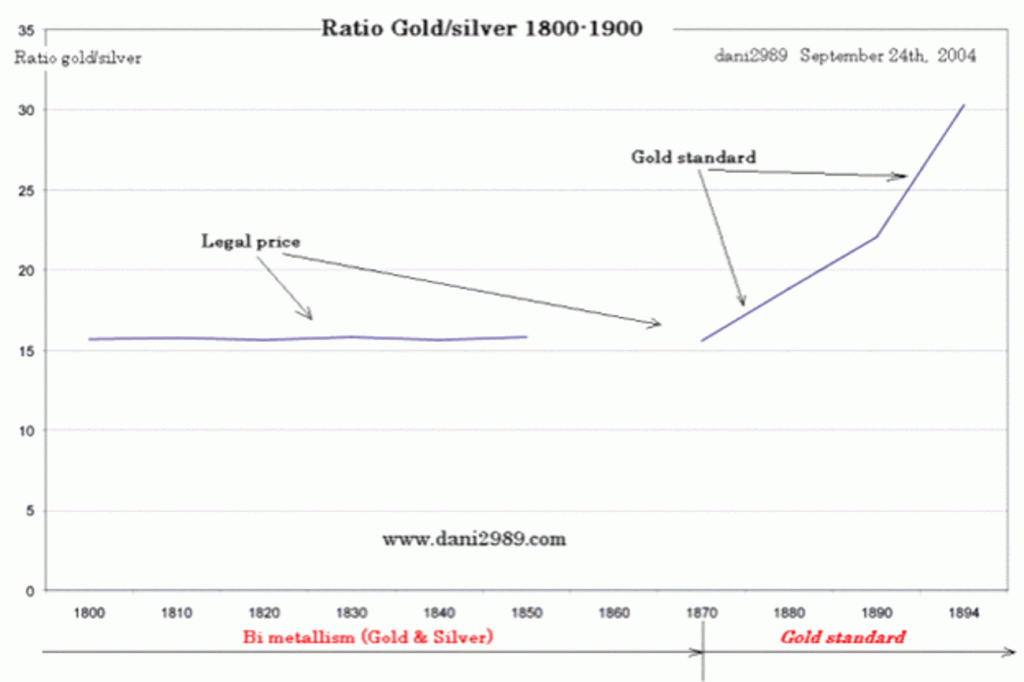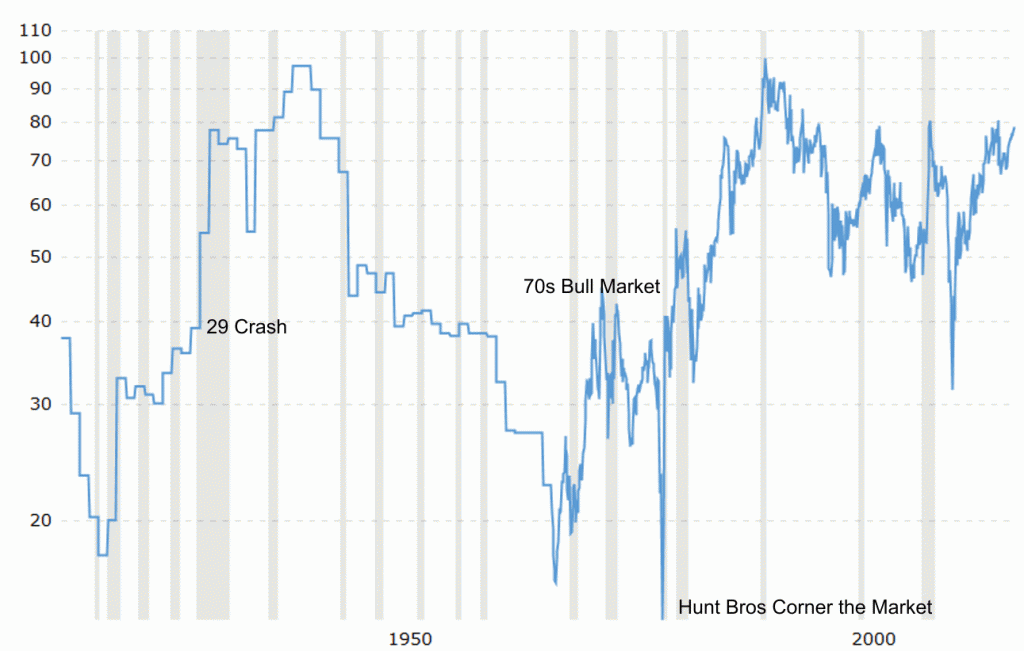The Gold Silver Ratio
For hundreds of years the gold silver ratio was around 15, that is, 15oz of silver buys 1oz of gold. This stability was important because both metals were used as currency (read the history of silver as a currency here and here). In fact, during the 19th century the ratio was around 15, by law, in France, England and the US. But towards the end of the century silver was no longer a monetary metal as countries moved onto a gold standard. The silver price rapidly depreciated, as reflected in the chart below.
Chart Courtesy Dr Thomas Chaize
The chart below shows the ratio from 1915 to September 2017. There is little pattern to the chart. For example, the 1929 stock market crash saw the ratio rise, as did the 1970’s bull market. The average ratio during the 20th century was around 47, far higher than previous centuries.
Finally, no discussion about silver would be complete without a mention of the Hunt Brothers. By January 1980 the brothers were estimated to hold around one third of all ex-government silver. This all changed when Commodity Exchange Inc restricted the use of margin purchases. This led to margin calls on the Hunts, who ultimately lost USD1 billion.
Chart Courtesy Macrotrends
There is a common trading strategy whereby gold is exchanged for silver (or an equivalent traded product such as an ETF) when the ratio is high and vice versa when the ratio is low. The ratio at the time of writing is 79.4, while this is high over the past 100 years, it has been over 90 on two occasions during that period.
Some are predicting a return to the past, that is a ratio of around 15. The basis for this belief is that silver is in deficit, with annual production not meeting demand. But the market has been in deficit for at least a decade and the price has basically moved sideways. Further, it takes no account of upward movement in the gold price.
In conclusion, it is not possible to predict the ratio, it went up during the depression and up during the 1970’s bull market. However, it may be worth looking at switching metals when extremes, high or low, occur. At this time an extreme high could be >85 and low <25.


